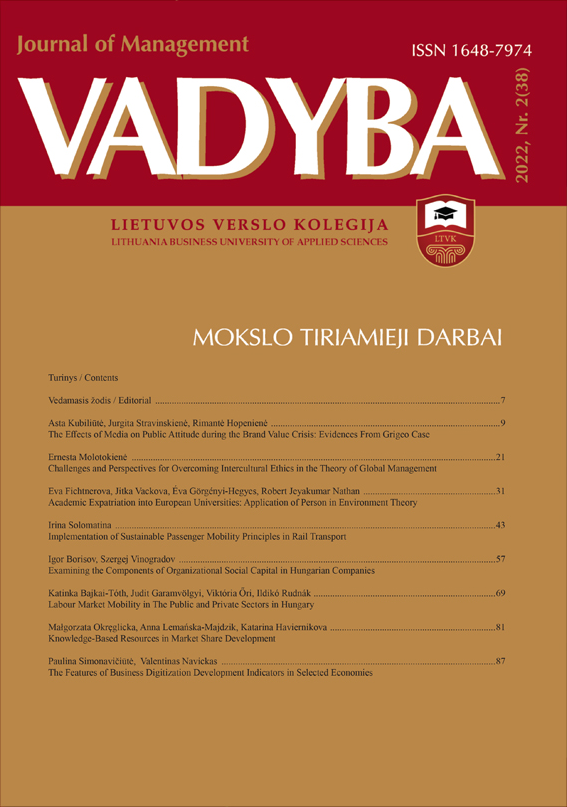LABOUR MARKET MOBILITY IN THE PUBLIC AND PRIVATE SECTORS IN HUNGARY
LABOUR MARKET MOBILITY IN THE PUBLIC AND PRIVATE SECTORS IN HUNGARY
Author(s): Katinka Bajkai-Tóth, Judit Garamvölgyi, Viktória Őri,, Ildikó RudnákSubject(s): Labor relations
Published by: Lietuvos verslo kolegija
Keywords: public sector; private sector; labour market; mobility; expectations;
Summary/Abstract: In this study, we examine the labour market of the public and private sectors, as well as the willingness to move from one to another based on specific factors, such as age or working position. Our research concerns the Hungarian labour market. It is important to determine the reasons behind employees deciding to switch from one sector to the other, as these two areas hold significantly different expectations and characteristics. In the literature review, we explore the characteristics of the two sectors separately, determine which factors are attractive and repulsive, followed by a comparison of them. We examine the expectations young graduates have towards employers, as well as which priorities have been showing an ever-increasing tendency. It is interesting to explore which areas young graduates imagine their futures in the most, as this may not correspond to where they can actually find employment. There are some cases where they use one sector to gain experience, only to accept a job in the other environment at the right moment. A properly established employer brand is important to young people, which may encompass internal, organizational and external labour market expectations, such as to establish a proper internal value system, offer a career path and ensure satisfaction. An organization recognizes what it can do to be desirable to the labour market and attract the professionally trained employees it needs as a result. As part of the empirical research, survey respondents from both sectors evaluated multiple positive workplace characteristics. During our research, we discovered discrepancies compared to our sector-specific ranking of leading characteristics. The typical features that received the highest evaluations served as feedback to employers and HR managers on what to pay attention to and how to improve upon these areas within their means. The study examines cases wherein the influencing factors that motivate employees during job selection can be determined.
Journal: VADYBA
- Issue Year: 38/2022
- Issue No: 2
- Page Range: 69-79
- Page Count: 11
- Language: English

